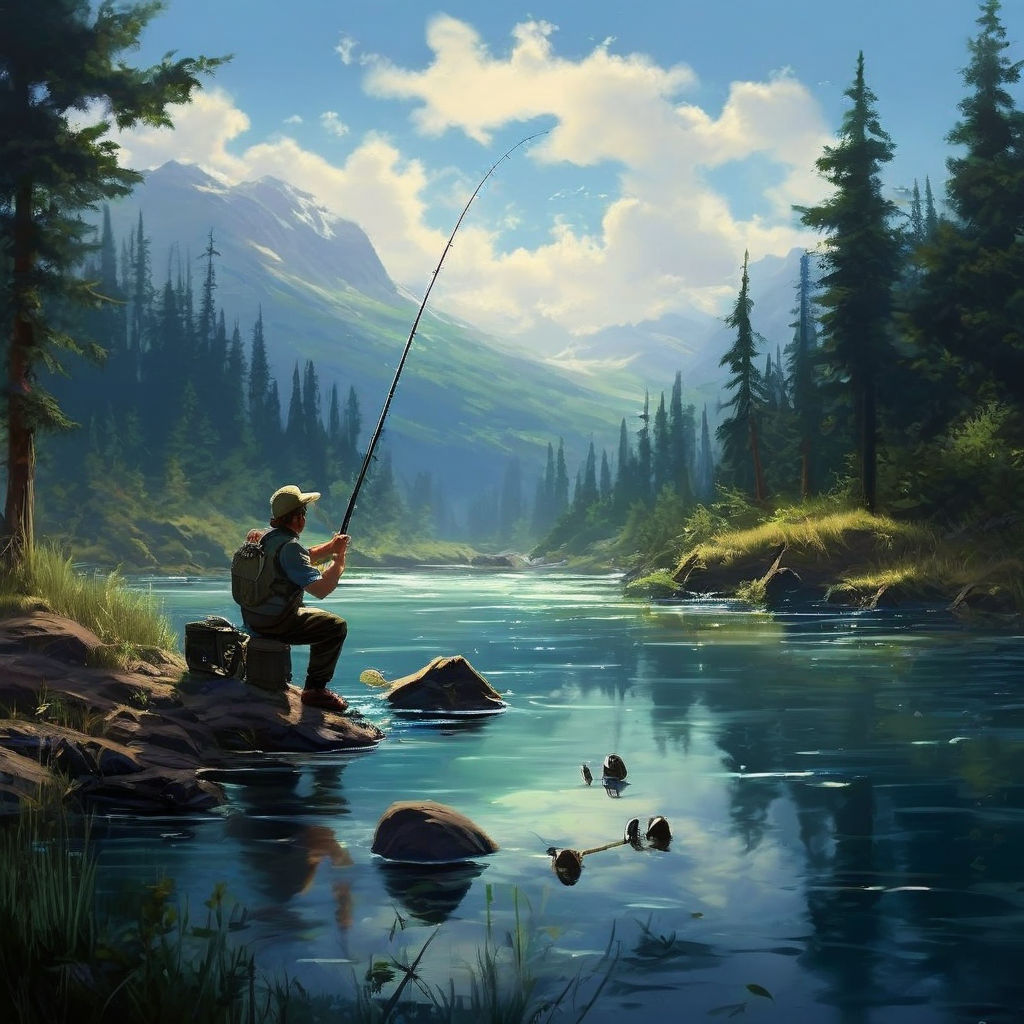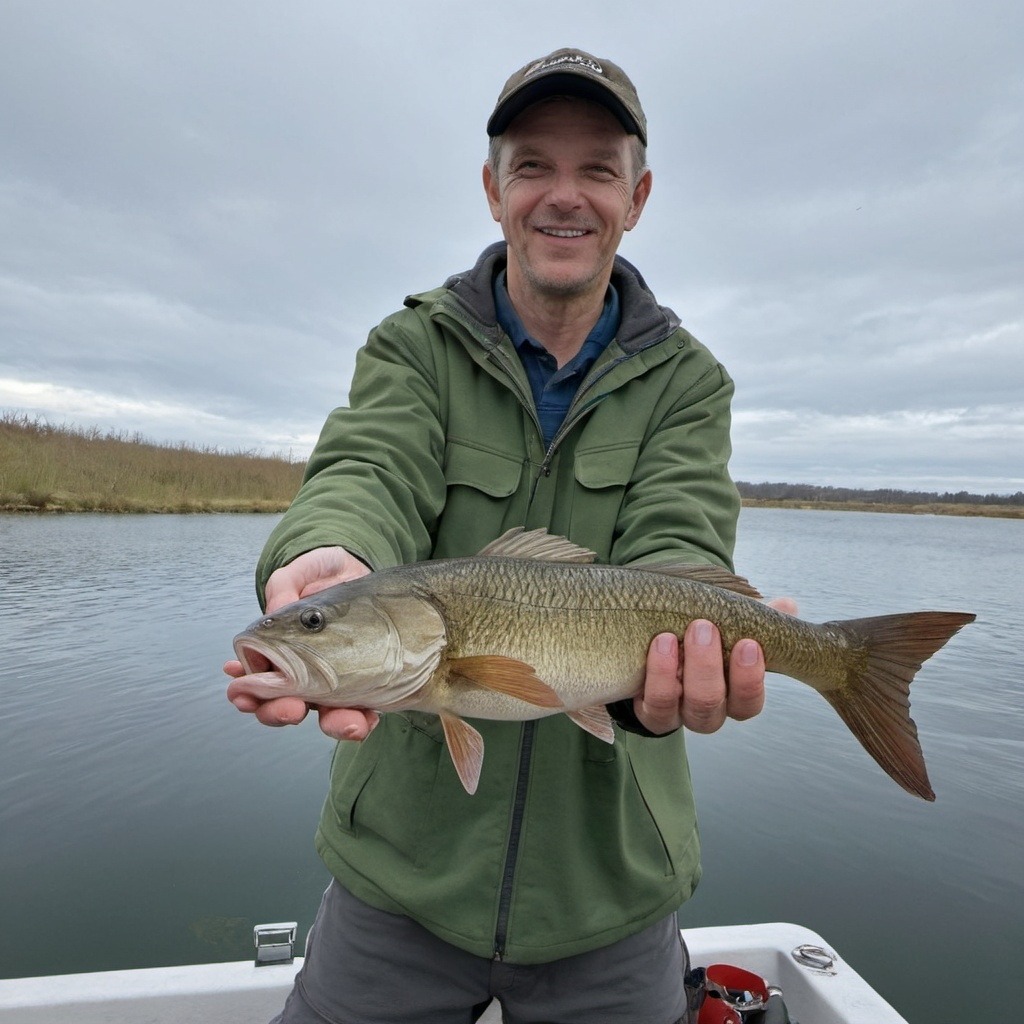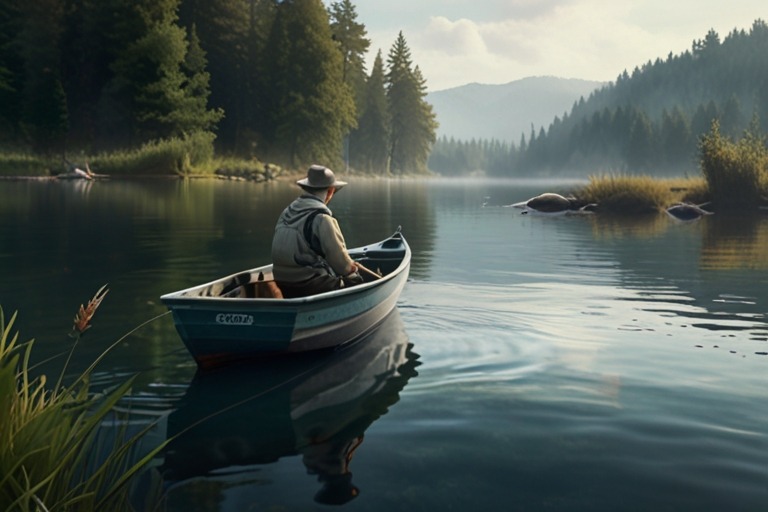
Imagine the tranquility of a crisp morning, the sun just beginning to rise over a placid lake, and the soft hum of nature waking up. In the United States alone, over 50 million people embrace this serene pastime every year, casting their lines into the water in pursuit of the perfect catch. Fishing is not just a hobby; it’s a beloved tradition that brings peace, excitement, and a deep connection to nature.
Fishing techniques are the lifeblood of this cherished activity, transforming a casual day by the water into an adventure filled with skill and strategy. Whether you’re a novice eager to learn or an experienced angler looking to refine your methods, understanding different fishing techniques can significantly enhance your success. From the elegant art of fly fishing to the precision of baitcasting, each technique offers unique challenges and rewards. In this guide, we’ll delve into some of the most popular fishing techniques, exploring their history, essential equipment, and tips for mastering them. By the end, you’ll be equipped with the knowledge to elevate your fishing game and create unforgettable memories on the water.
Fly Fishing
History and Origins
Fly fishing dates back to ancient times, with the earliest records tracing back to Roman times when Claudius Aelianus wrote about anglers in Macedonia using artificial flies. This method gained popularity in England and Scotland during the 17th century, evolving into a sophisticated practice among the elite. Today, fly fishing is celebrated worldwide for its blend of art and sport, allowing anglers to connect deeply with nature while honing their skills.
Equipment Needed
Fly fishing requires specialized gear to master its unique techniques. The essential equipment includes:
- Fly Rod: A lightweight, flexible rod designed to cast fly lines with precision.
- Fly Reel: A simple, balanced reel that stores the fly line and provides a smooth drag system.
- Fly Line: A heavy, tapered line that carries the lightweight fly to the target.
- Leader and Tippet: Thin, transparent lines that connect the fly to the main line, providing stealth and flexibility.
- Flies: Artificial insects and bait imitations made from feathers, fur, and synthetic materials.
Basic Techniques
Mastering fly fishing involves learning a few key techniques:
- Casting: Start with a simple overhead cast. Hold the rod with a firm grip, and use a smooth back-and-forth motion to load the rod and propel the line forward.
- Mending: Adjust the line on the water to reduce drag and ensure a natural drift of the fly.
- Striking: Set the hook quickly by lifting the rod tip when you see or feel a fish take the fly.
- Playing and Landing: Use the rod and reel to tire the fish, guiding it gently to the net.
Practicing these techniques helps develop the finesse and accuracy needed for successful fly fishing.
Popular Fly Fishing Spots
Fly fishing enthusiasts seek out iconic destinations known for their pristine waters and abundant fish populations. Some renowned spots include:
- Montana, USA: Famous for its trout-rich rivers like the Madison and Yellowstone.
- Scotland: Home to the storied River Spey, ideal for salmon fishing.
- New Zealand: Known for its crystal-clear streams and large brown trout.
- Patagonia, Argentina: Offers remote, unspoiled rivers teeming with diverse fish species.
These destinations provide not only excellent fishing opportunities but also breathtaking natural beauty, making them bucket-list spots for any fly angler.
Spinning
Introduction to Spinning
Spinning is a versatile and accessible fishing technique that has captured the hearts of anglers worldwide. It involves using a spinning reel and rod to cast lightweight lures with precision and ease. This method is particularly popular due to its simplicity, making it an excellent choice for beginners while still offering enough complexity to keep seasoned anglers engaged. Spinning allows for long casts, making it perfect for targeting a variety of fish in both freshwater and saltwater environments.
Gear and Tackle
To get started with spinning, you’ll need some specific gear:
- Spinning Rod: Typically lightweight and ranging from 6 to 10 feet in length, spinning rods are designed to handle a variety of lure weights and fish sizes. The rod’s flexibility aids in casting and retrieving.
- Spinning Reel: The reel is mounted below the rod and features a fixed spool. This design minimizes line tangling and makes casting easier. Look for reels with smooth drag systems and sufficient line capacity.
- Lures: Spinning lures come in various shapes and sizes, including soft plastics, spoons, spinners, and crankbaits. Each type mimics different prey and can be chosen based on the target fish species and fishing conditions.
Techniques and Tips
Spinning involves a few fundamental techniques that, when mastered, can greatly improve your success rate:
- Casting: Use your dominant hand to hold the rod and reel. Open the bail (the wire loop on the reel), hold the line with your finger, and swing the rod back before smoothly bringing it forward, releasing the line at the right moment to propel the lure.
- Retrieving: After the cast, close the bail and start reeling in the line. Vary the speed and pattern of your retrieve to mimic the movement of natural prey, enticing fish to strike.
- Setting the Hook: When you feel a bite, quickly and firmly lift the rod tip to set the hook in the fish’s mouth.
- Playing the Fish: Use the rod’s flexibility and the reel’s drag system to tire the fish out before bringing it in. This reduces the chance of the fish escaping or breaking the line.
Best Fish for Spinning
Spinning is an effective technique for catching a wide variety of fish. Some commonly targeted species include:
- Bass: Both largemouth and smallmouth bass are aggressive predators that readily take spinning lures.
- Trout: Spinning is excellent for catching various trout species, especially in streams and rivers.
- Pike: These voracious fish are often caught using larger spinning lures like spoons and crankbaits.
- Walleye: Known for their elusive nature, walleyes can be caught using a slow and steady retrieve with spinners or soft plastics.
- Saltwater Species: In coastal waters, spinning can yield species like redfish, snook, and sea trout.
Spinning offers an exciting and effective way to enjoy fishing, whether you’re casting from the shore, a boat, or wading in a river. Its versatility and ease of use make it a favorite among anglers of all skill levels.
Baitcasting
Understanding Baitcasting
Baitcasting is a precision fishing technique favored by experienced anglers who seek greater control and accuracy. Unlike spinning reels, baitcasting reels are mounted on top of the rod and feature a revolving spool. This setup allows for more accurate casting, better control over the lure, and the ability to handle heavier lines and lures. Baitcasting is particularly advantageous when targeting larger fish species or when fishing in challenging conditions that require precise placement of the bait.
Essential Gear
To get started with baitcasting, you’ll need the following gear:
- Baitcasting Rod: These rods are typically shorter and stiffer than spinning rods, providing the strength needed to handle larger fish and heavier lures. They range from 6 to 8 feet in length.
- Baitcasting Reel: Featuring a revolving spool and a braking system, baitcasting reels offer precise control over the line release. Look for reels with adjustable braking systems and smooth drag mechanisms.
- Baits and Lures: Baitcasting is compatible with a wide range of lures, including jigs, crankbaits, spinnerbaits, and soft plastics. Choose your lures based on the target fish species and fishing environment.
Casting Techniques
Mastering baitcasting requires practice and finesse. Follow these steps to improve your casting technique:
- Grip and Stance: Hold the rod with your dominant hand on the handle and your thumb resting lightly on the spool. Stand with your feet shoulder-width apart, facing your target.
- Adjust the Brakes: Set the reel’s braking system according to the lure’s weight. Start with a higher brake setting and gradually reduce it as you become more comfortable with casting.
- Casting Motion: With the rod tip pointing slightly upward, press the thumb bar to release the spool. Swing the rod back, then bring it forward in a smooth motion, releasing your thumb pressure to let the line out. Use your thumb to control the spool speed and prevent backlash.
- Stopping the Cast: As the lure approaches your target, apply gentle pressure with your thumb to stop the spool and accurately place the lure.
Common Challenges
Baitcasting can present several challenges, particularly for beginners. Here are some tips to overcome common issues:
- Backlash (Bird’s Nest): One of the most common problems in baitcasting is backlash, where the line tangles on the spool. To minimize this, practice thumb control and adjust the reel’s braking system. Start with heavier lures as they are easier to cast.
- Accuracy: Improving casting accuracy takes time and practice. Focus on smooth, controlled motions and aim for specific targets during practice sessions.
- Line Management: Use high-quality lines suited for baitcasting, such as braided or fluorocarbon lines, which offer better strength and sensitivity. Regularly check for line twists and tangles.
- Drag Adjustment: Properly setting the drag is crucial for playing and landing fish. Adjust the drag to provide enough resistance without risking a line break.
Trolling
What is Trolling
Trolling is a dynamic fishing technique where one or more fishing lines, baited with lures or baitfish, are drawn through the water behind a moving boat. This method allows anglers to cover large areas and target fish that are spread out or in deeper waters. Trolling is particularly effective for catching a variety of predatory fish species and is widely used in both freshwater and saltwater fishing.
Equipment and Setup
To troll effectively, you’ll need specialized gear and a well-prepared boat setup:
- Trolling Rods: These rods are typically longer and sturdier than regular fishing rods, designed to handle the pressure of moving water and larger fish. They range from 7 to 12 feet in length.
- Trolling Reels: Conventional or baitcasting reels are commonly used for trolling, offering high line capacity and durable drag systems to manage strong fish.
- Lines and Leaders: Strong monofilament, braided, or fluorocarbon lines are preferred for their durability. Leaders are used to prevent the fish from biting through the line.
- Lures and Baits: A variety of lures can be used for trolling, including crankbaits, spoons, spinners, and soft plastics. Natural baits like minnows or squid are also effective.
- Downriggers and Planers: These devices help control the depth of the lure. Downriggers use a weighted ball to keep the lure at a specific depth, while planers allow lures to spread out from the boat.
Effective Trolling Methods

Successful trolling requires a combination of strategy, knowledge of the water, and the right techniques:
- Speed Control: Maintain a consistent trolling speed, typically between 2 to 5 miles per hour, depending on the target species and lure type. Use a GPS or speedometer to monitor your speed.
- Depth Management: Adjust the depth of your lures to match the depth where the target fish are located. Use downriggers, planers, or lead core lines to control lure depth.
- Zigzag Patterns: Troll in zigzag or S-shaped patterns to cover more area and simulate the erratic movement of prey, which can trigger strikes from predatory fish.
- Adjusting Lure Distance: Vary the distance of your lures from the boat. Some fish may be attracted to the wake of the boat, while others may strike further back.
- Monitor Electronics: Use fish finders and depth sounders to locate schools of fish and structure where fish might be hiding. Adjust your trolling path accordingly.
Target Species
Trolling is effective for targeting a wide range of fish species, both in freshwater and saltwater environments:
- Freshwater Species:
- Lake Trout: Found in deep, cold freshwater lakes, lake trout are a prime target for trolling.
- Salmon: Both Chinook and Coho salmon are often caught by trolling in large lakes and rivers.
- Walleye: Known for their elusive nature, walleyes are frequently targeted with trolling techniques.
- Striped Bass: In reservoirs and large rivers, striped bass are a popular trolling target.
- Saltwater Species:
- Mahi-Mahi (Dolphin Fish): These brightly colored fish are a common target in offshore trolling.
- Tuna: Various tuna species, including yellowfin and bluefin, are prime targets for high-speed trolling.
- Marlin and Sailfish: These large billfish are often caught by trolling in deep ocean waters.
- Kingfish: Also known as king mackerel, these fast predators are frequently caught by trolling along coastlines.
Trolling is a versatile and effective method that allows anglers to cover large areas and target a variety of fish species. With the right equipment, techniques, and knowledge, trolling can lead to successful and exciting fishing adventures.
Ice Fishing
Introduction to Ice Fishing
Ice fishing is a wintertime adventure that offers a unique and serene way to enjoy the sport of fishing. As lakes and rivers freeze over, anglers venture onto the ice, drilling holes to drop their lines and hooks beneath the frozen surface. The quiet and solitude of an icy expanse, combined with the thrill of catching fish in such an unconventional manner, makes ice fishing a cherished pastime for many. The appeal lies not only in the challenge but also in the camaraderie, as groups of friends and family often gather in heated shelters, sharing stories and warmth.
Necessary Equipment
To embark on an ice fishing expedition, having the right gear is crucial. The essentials include:
- Ice Auger: This tool is used to drill holes through the ice, providing access to the water below. Manual, gas-powered, and electric augers are available, each offering different levels of convenience and efficiency.
- Ice Fishing Rod and Reel: Shorter and sturdier than traditional rods, ice fishing rods are designed to handle the cold and the specific challenges of ice fishing. Paired with a sensitive reel, they help detect subtle bites.
- Fishing Line: A strong, durable line that can withstand freezing temperatures is necessary. Many anglers prefer braided lines for their strength and sensitivity.
- Hooks and Bait: Small jigs and live bait, such as minnows or waxworms, are commonly used to attract fish beneath the ice.
- Shelter: Portable ice fishing shelters, often called “ice huts” or “shanties,” provide protection from the harsh elements and help retain heat.
Techniques and Safety Tips
Fishing on ice requires specific techniques and a keen awareness of safety. Here are some tips for success and safety:
- Drilling and Setting Up: Choose a spot with a history of good fishing or use a fish finder to locate underwater structures where fish might gather. Drill multiple holes to increase your chances of success and set up your shelter over the most promising one.
- Bottom Fishing: Lower your baited hook to the bottom, then reel it up slightly. Fish often stay close to the lakebed in winter, so this technique can be very effective.
- Line Management: Keep your fishing line taut and pay attention to any slight movements. Fish in cold water can be less aggressive, and bites may be subtle.
- Live Bait: Use live bait to increase your chances of attracting fish. The natural movement of live bait can entice fish that are otherwise sluggish in cold water.
- Safety First: Always check the thickness of the ice before venturing out. A minimum of 4 inches of clear ice is recommended for safe foot travel. Wear ice cleats to prevent slipping and carry ice picks for self-rescue in case of a fall through the ice.
Top Ice Fishing Locations
For those looking to experience the best ice fishing, several destinations stand out:
- Lake of the Woods, Minnesota: Known for its abundance of walleye and northern pike, this lake offers excellent ice fishing opportunities.
- Devils Lake, North Dakota: Famous for its perch and walleye populations, Devils Lake attracts ice anglers from across the country.
- Green Bay, Wisconsin: This part of Lake Michigan is renowned for its whitefish and trophy-sized northern pike.
- Lake Simcoe, Ontario, Canada: Often referred to as the “ice fishing capital of North America,” Lake Simcoe is a hotspot for perch, trout, and whitefish.
These locations not only provide excellent fishing but also stunning winter landscapes, making them ideal spots for an ice fishing adventure.
Whether you’re a seasoned angler or a curious newcomer, ice fishing offers a unique blend of challenge, tranquility, and excitement. With the right equipment and techniques, you can enjoy this fascinating winter sport safely and successfully.
